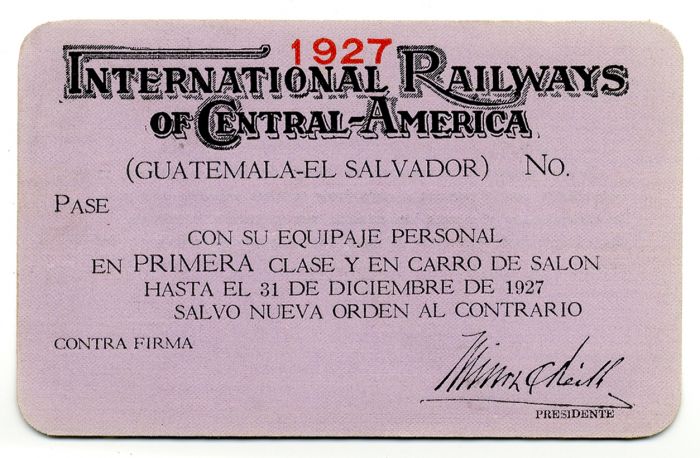International Railways of Central America Railroad Pass - Americana
Inv# AM1826
Guatemala
Railroad Pass for the International Railways of Central-America. Measures 4" x 2 1/2". International Railways of Central America (IRCA) was a United States-based entity that managed significant railway operations in Guatemala and El Salvador. In 1912, IRCA took control of nearly all railway lines in Guatemala, including the sole connection to the Caribbean, and acquired a prominent Salvadoran railroad. In 1929, the company linked the railway systems of Guatemala and El Salvador, thereby granting El Salvador access to the Caribbean Sea. In 1936, the United Fruit Company of Boston acquired a controlling stake in IRCA. During the Guatemalan Revolution (1944–1954), IRCA and its parent company faced scrutiny from economic nationalists and labor activists, who criticized the company's monopoly on freight transport and its unfair pricing practices. Following the revolution, United Fruit divested a significant portion of its IRCA shares. In December 1968, the government acquired IRCA and transferred railway operations to a state-owned entity, Ferrocarriles de Guatemala (FEGUA).










Ebay ID: labarre_galleries